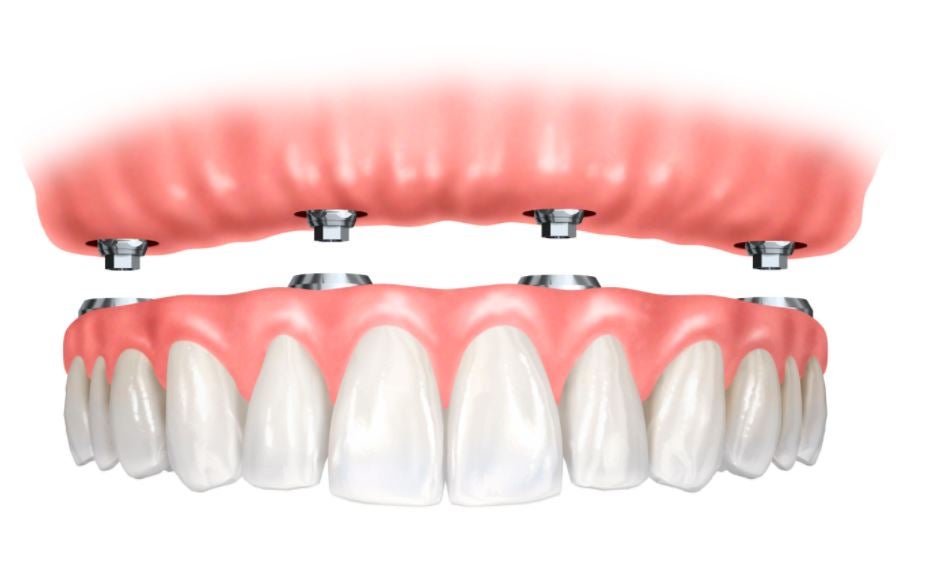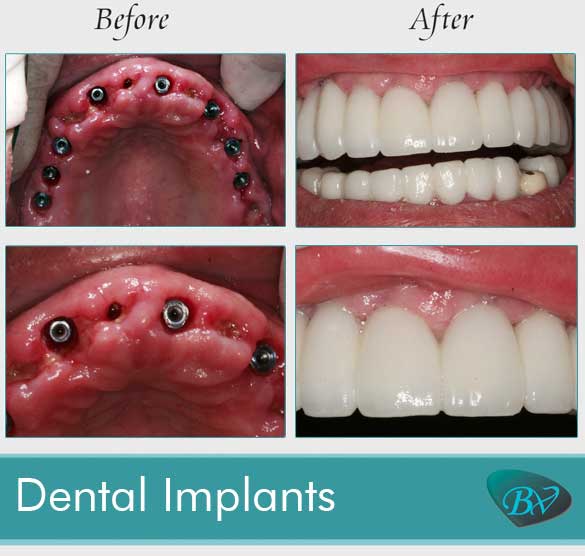Getting My Dental Sense To Work
Getting My Dental Sense To Work
Blog Article
Not known Facts About Dental Sense
Table of ContentsThe Definitive Guide to Dental SenseThe Facts About Dental Sense UncoveredThe Single Strategy To Use For Dental SenseSome Known Factual Statements About Dental Sense
are clinical devices surgically implanted right into the jaw to bring back a person's ability to eat or their look. They give support for fabricated (fake) teeth, such as crowns, bridges, or dentures. When a tooth is shed due to injury or disease, an individual can experience complications such as fast bone loss, faulty speech, or changes to chewing patterns that cause pain.Oral dental implant systems include an oral implant body and oral implant joint and may likewise consist of an abutment addiction screw. Kids dental. The dental implant body is operatively placed in the jawbone in location of the tooth's root. The dental implant joint is generally affixed to the dental implant body by the abutment addiction screw and extends through gums into the mouth to sustain the connected synthetic teeth
(http://peterjackson.mee.nu/where_i_work#c2504)Framework of The Oral Implant System selecting oral implants, speak to your oral company about the prospective benefits and risks, and whether you are a prospect for the treatment. Things to take into consideration: Your total health is a vital consider identifying whether you are a great candidate for oral implants, for how long it will take to recover, and for how long the implant might remain in place.
Smoking cigarettes may impact the healing procedure and decrease the long-lasting success of the dental implant. The recovery procedure for the dental implant body may take several months or longer, during which time you normally have a short-lived joint instead of the tooth. the dental implant treatment: Meticulously comply with the dental hygiene guidelines provided to you by your oral copyright.
4 Easy Facts About Dental Sense Described
Implant failure can result in the requirement for another operation to repair or change the implant system. Brings back the capability to chew Brings back aesthetic appearance Aids maintain the jawbone from diminishing as a result of bone loss Protects the wellness of the surrounding bone and periodontals Assists maintain adjacent (neighboring) teeth stable Enhances lifestyle Damage to surrounding all-natural teeth throughout dental implant positioning Injury to the surrounding tissues during surgical treatment, such as sinus perforation Injury throughout surgical treatment (for instance, crack of surrounding jawbone) Inadequate function, such as feeling like the teeth do not attack with each other typically An experience that the tooth hangs or twisting in position resulting from a joint screw loosening Implant body failure (looseness of the implant body) as a result of systemic infection, which might be most likely in people with unchecked diabetics issues because of local infection in bone and periodontals sustaining the dental implant body due to delayed recovery, which may be most likely in clients that smoke Problem cleaning the periodontals around the dental implant, resulting in poor oral health Untreated periodontal condition Post-surgical numbness because of nerve impingement or damages Constantly alert healthcare carriers and imaging service technicians that you have oral implants prior to any kind of magnetic resonance imaging (MRI) or x-ray procedures.
FDA is not conscious of any adverse occasions reported for MRI or x-ray treatments with oral implants. Dental implants systems are typically made from products that follow international consensus requirements of the International Organization for Standardization (ISO) or ASTM International. These standards have information of what makes a safe material.

A dental implant is a structure that replaces a missing tooth. With screw-like gadgets, the cosmetic surgeon inserts check it out an implant right into the jawbone, and it acts as a support for an artificial tooth, called a crown. A tool called a joint attaches the synthetic tooth to the oral implant. The crown is customized to fit the person's mouth and match the shade of their teeth.
The Main Principles Of Dental Sense
Some individuals are not qualified for oral implant surgical treatment. It is for oral surgeons to operate people with: acute illnessuncontrollable metabolic diseasebone or soft cells illness or infectionIf these problems are solved, an individual can have the surgery. In, oral specialists avoid from operating people with: If individuals with any of the above undertake dental implant surgical treatment, there is a higher threat of the dental implant falling short.

Oral dental implant surgical procedure is an individualized procedure. It's not the same for every person. Yet the adhering to offers a general review of what you can expect your dental professional, dental surgeon, periodontist or prosthodontist to do: Place the dental implant surgically. Provide you time to recover. Attach the message and last crown, bridge or denture.
Next, your doctor will meticulously place the dental implant right into your jaw. If your implant is near the front of your mouth, your dental practitioner will certainly make a momentary tooth for you to wear up until you heal.
Excitement About Dental Sense
Your provider can inform you what to anticipate in your scenario. During the recovery phase, your jawbone needs to fuse to the dental implant. This procedure, called osseointegration, is crucial for stability and lasting success. This procedure can take anywhere from 3 to 9 months. In some instances, it may take much longer.
Once your implant heals, your dental expert can attach the joint (tiny connector post) and your last restoration (crown, bridge or denture). This usually takes concerning one hour to finish and might need a 2nd small surgery. You shouldn't really feel any type of discomfort throughout your dental implant treatment because your company will certainly utilize medication to numb your gum tissues.
Report this page